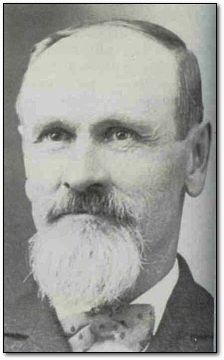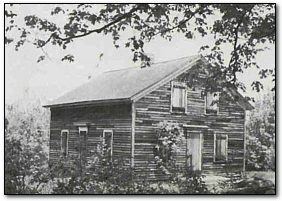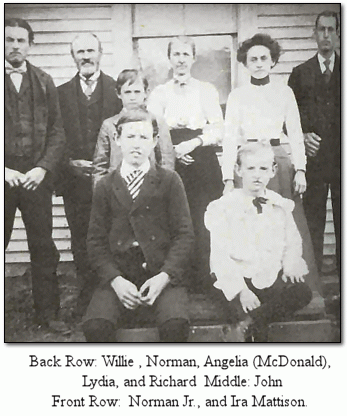The Glastenbury Mattisons

The relationship of Mattesons (and Mattisons) in the role of the town of Glastenbury, in Bennington County, Vermont, is a very interesting one. Glastenbury, it should be noted, is one of five unincorporated towns and gores in Vermont; of these, Glastenbury and its nearby cousin Somerset are the only two that ever were incorporated.
The Deming Catalog of Vermont Officers for 1851 states that a Henry and Francis Matteson were the first, or among the first, settlers of the town. Early census records, however, do not support this contention, showing no
Mattesons living in the town until the 1840's. There were many Mattesons living in nearby Bennington, and even closer in Shaftsbury, by this time,but the earliest record of any connection between them and the tiny Glastenbury was in 1795. Recorded minutes of the group of land speculators, mostly lawyers and other Bennington elite, who acted as proprietors of the area until its official incorporation, record giving a Peter Matteson a preferential
selection of land as a reward for his building two mills there. Tyler Resch, genealogical librarian for the Bennington Musuem, says that this is the same Peter Matteson known for building a tavern in Shaftsbury which is now a historical site. (1)
The next mention is not until the 1840's, when John I. Mattison and his family arrived from Rhode Island. This Mattison quickly became town clerk and served in this capacity until 1872. His son Norman, would go on
to administrate the town, and to even achieve much greater fame as a judge and a state senator, the only one ever to come from this tiny town. Norman Mattison was said to have been called "the Emperor of Glastenbury,"and that he "ruled the town with an iron fist,"but also that he was respected and would travel many miles to help a friend. Norman Mattison married Angelia Aurelia MacDonald, and begat Willie, Lydia (who was also Town Clerk for a time in the early twentieth century, Arthur, John L. (who I know was born in 1890, and served as a representative in the State House,
as well as a farmer, selectman, school director, and second constable) Norman Jr. and Ira.

By that time, the town had begun to decline and dwindle in population. The high elevation and hostile terrain had made for poor farming from the beginning. Glastenbury was primarily a logging town, and some families made income by picking ferns for sale in New York City floral shops. By 1900, the mountain was practically clear-cut. They made a brief attempt to stimulate a tourism trade in this beautiful wilderness, which included the conversion of the two main buildings into an inn and a casino, and the construction of the first electric railroad to cover mountainous terrain. This showed initial promise but was brought to sudden end by a flood only a few months later that destroyed most of the railroad tracks. By 1920 there were 17 residents. By 1930, after the Depression had hit, only seven people lived in the town, and only five year round: Ira Mattison, his wife Louisa (maiden name uncertain), his sons, Roy and James, and his mother Angelia.
The Mattison's achieved some national publicity when in 1936 Ripley's Believe it or Not published a cartoon depicting three people entitled "The Mattison Family is the Whole Town of Glastenbury, Vermont. Ira Mattison and
his wife and his mother hold every office." This wasn't technically true, but it was close; the summer residents, Roland and Caroline Hazard,were also on the board of selectmen and held sundry nominal positions such as school board members, fire department, etc.
Indeed, the Glastenbury residents seem to have gotten a great deal of publicity in that year. First, Ira Mattison was noted for being two months late showing up as representative of Glastenbury in the state legislature, due to the illness of his wife at that time. More widely noted was their side note to the 1936 election. Glastenbury had stood out politically as having voted unanimously democrat since its very inception, throughout the time when Vermont had been the nation's most staunchly Republican state. In the '36 race, when only Vermont and Maine supported Landon (launching
into popularity the phrase "As goes for Vermont, so goes Maine"), only Glastenbury,with its three voters, went unanimously with Roosevelt.

This, along with other factors such as the representatives of other cities and towns resentment that a one-family town should have an equal vote with Montpelier, Rutland, etc., and a child labor scandal in the similarly one-family
town of Somerset lead to an official act that unincorporated both towns in1937.
Ira died less than two years later, at only 45. Two years later, his mother, Aurelia Mattison, died in 1941, and Ira's widow moved with her two sons, Roy and James, to Bennington.
John I. Mattison came to Glastenbury, VT from Rhode Island in the 1840's. Ira's widow and two sons eventually moved to Bennington, VT, but nothing about the line before or after those points is known.
Norman, son of John I. Matteson, was a judge and a state senator in addition to running the town.
By Joe Durwin
Sources:
Photos and other info from: Joe Durwin
Levin, Ruth. (1978) Ordinary Heroes: The Story of Shaftsbury. Shaftsbury Historical Society, Vermont.
A variety of sources from The Bennington Banner, but in particular the series of "Our Community Heritage" columns by Tyler Resch which appeared weekly from June 16- Dec.1 of 2000.
John Mattison, referred to as John I. Mattison in the above article, is John H. Mattison b. Mar. 27, 1816 d. Mar. 6, 1880
 Return to Articles Return to Articles
|